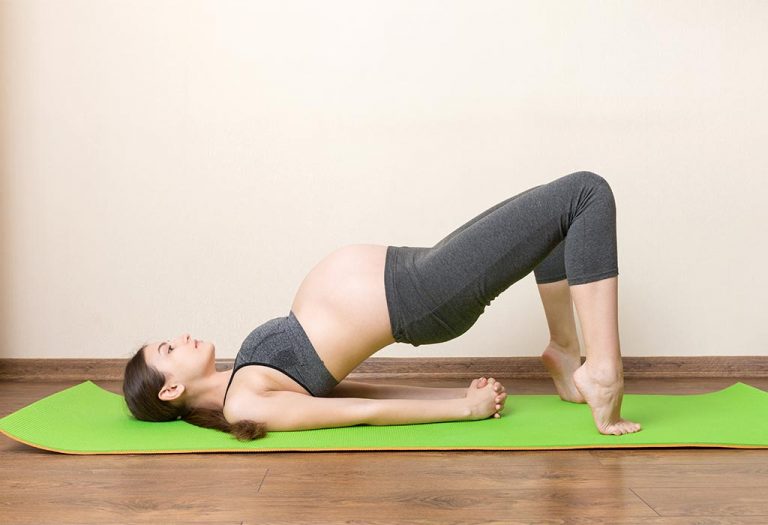Surprising Positions To Relieve Gas While Pregnant
- Amazing Positions That Will Relieve Gas While Pregnant
- Alternative Techniques Of Relieving Gas While Pregnant
- FAQs
Pregnancy is an exciting time, filled with anticipation and hopes for the life ahead for you and your little one. But before that happens, you will experience many changes, both physical and emotional, to make room for the growing peanut within you! While many changes are expected, and you’re well prepared for them, some of them hit you out of the blue one day, requiring you to adjust on the fly.
During pregnancy, it’s not uncommon for women to experience various discomforts. Among them is the pesky issue of gas. Fortunately, a few effective pregnancy gas relief positions can help. This guide will delve deep into these positions and techniques that can offer relief.
Amazing Positions That Will Relieve Gas While Pregnant
Gas is one of the less glamorous side effects of pregnancy, but fortunately, it’s manageable. Using specific positions can be a game-changer in relieving this discomfort. Here are six effective pregnancy positions to relieve gas that can make your journey smoother.
1. Child’s Pose

How to Do
1. Begin on your hands and knees in a tabletop position.
2. Sit back onto your heels, reaching your arms on the ground.
3. Allow your forehead to rest on the floor and breathe deeply
How It Helps
Child’s Pose provides a gentle stretch to the back, opening up the abdominal area and releasing trapped gas. It relieves constipation and stimulates the digestive system (1).
2. Knee-To-Chest Stretch
How to Do
1. Lie flat on your back on a comfortable mat.
2. Gently bring one knee towards your chest, grasping it with both hands.
3. Hold for a few breaths, then switch to the other knee.
How It Helps
This position promotes intestinal movement and can assist in guiding gas through your system. It is also known as the Wind Relieving Pose (2).
3. Deep Squat

How to Do
1. Stand with your feet hip-width apart.
2. Slowly lower your body, bending at the knees, into a deep squat.
3. Keep your arms in front of you for balance, and hold the position for a few deep breaths.
How It Helps
Deep squats open up the pelvic region, creating space in the abdomen and stimulating the digestive system, easing gas release (3).
4. Standing Forward Fold

How to Do
1. Stand upright, feet shoulder-width apart.
2. Bend forward from the hips, allowing your hands to touch the ground or your shins.
3. Let your head hang freely and take a few deep breaths.
How It Helps
This position stretches the back and abdominal muscles, compressing the abdomen and digestive tract, which aids digestion and provides a pathway for gas to move and release (4).
5. Seated Spinal Twist

How to Do
1. Sit on the floor with your legs straight before you.
2. Bend one knee and place its foot outside the opposite thigh.
3. Turn your torso toward the bent knee, using your opposite arm or elbow for leverage.
How It Helps
Twists stimulate the digestive system and help move trapped gas, providing relief (5).
6. Pelvic Tilts

How to Do
1. Start by lying on your back with your knees bent and feet flat on the ground.
2. Tighten your abdominal muscles, pushing your lower back into the floor.
3. Hold for a few seconds and then relax.
How It Helps
Pelvic tilts strengthen the core muscles and promote movement in the intestines, which can help shift and release gas.
By incorporating these positions into your daily routine, you can mitigate the discomfort of gas during pregnancy, ensuring the comfort of both you and your baby.
Alternative Techniques Of Relieving Gas While Pregnant
Pregnancy is a time of joy, anticipation, and, unfortunately, some discomforts. Gas is a common culprit, often resulting from the hormonal changes and the pressure of a growing baby on the digestive tract. But, if certain positions don’t appeal to you or if you’re looking to supplement them with other methods, there’s good news. Various alternative techniques can effectively help alleviate gas during pregnancy. Each method caters to different needs and preferences, ensuring every mom-to-be can find her ideal solution.
1. Dietary Adjustments
Making slight changes to your diet can significantly impact the amount of gas produced. By being mindful of the foods you consume, you can control and reduce gas formation (6).
Limit Gas-Inducing Foods: Some foods are notorious for causing gas. These include beans, broccoli, Brussels sprouts, and carbonated drinks. Reduce your intake or consume them in moderation.
Eat Smaller Meals Frequently: Instead of having three large meals, consider eating five to six smaller meals throughout the day. This helps in easier digestion and reduces the chances of gas accumulation.
2. Stay Hydrated
Water plays a crucial role in digestion. It helps break down food in your stomach, ensuring smoother bowel movements and reduced gas (6).
Drink Plenty of Water: Aim for 8-10 glasses daily, and consider sipping throughout the day rather than drinking large quantities at once.
Limit Carbonated Drinks: Fizzy drinks can introduce extra gas into your system, contributing to bloating and discomfort.
3. Engage in Mild Exercise
Movement aids digestion and can be particularly helpful in passing trapped gas (6)..
Take Short Walks: A brief walk after meals can encourage digestion and alleviate gas pain.
Try Prenatal Yoga: Specific yoga poses can be beneficial, especially those mentioned earlier. Always consult with an instructor familiar with prenatal requirements.
4. Herbal Solutions
Natural remedies can often provide relief without any side effects. Certain herbs have properties that can soothe the digestive system (7).
Peppermint Tea: Known for its anti-spasmodic properties, peppermint tea can relax the digestive tract muscles and ease gas pains.
Ginger: Incorporating ginger into your diet or drinking ginger tea can alleviate bloating and gas. It has properties that aid digestion and reduce inflammation.
By integrating these techniques into your daily routine and the beneficial positions, you can significantly reduce the discomfort caused by gas during pregnancy. Always consult a healthcare professional before significantly changing your diet or exercise routine.
FAQs
1. When should you consult a doctor for gas during pregnancy?
It’s normal to experience some gas during pregnancy. However, if it’s accompanied by severe pain, vomiting, or any other unusual symptoms, it’s essential to consult your healthcare provider (8).
2. Does gas during pregnancy affect my baby?
No, while it might be uncomfortable for you, gas doesn’t harm your baby. Your baby is well-protected inside the amniotic sac and won’t be affected by your digestive issues (6).
In conclusion, while gas during pregnancy can be uncomfortable, several positions and techniques can offer relief. Always listen to your body; if any discomfort persists or becomes severe, seek advice from a healthcare professional.
References/Resources:
1. Yoga During Pregnancy: Benefits & Poses to Soothe Common Aches & Pains; Arhanta Yoga; https://www.arhantayoga.org/blog/yoga-poses-for-pregnancy/
2. Yoga asanas for gastric problems; The Art of Living; https://www.artofliving.org/yoga/yoga-poses/wind-relieving-pose
3. Ekhart, E.; Digestion S.O.S. Yoga; https://www.ekhartyoga.com/articles/wellbeing/digestion-sos-yoga
4. Anatomy of Forward Bends: Your Guide to Safe Yoga Folds; Arhanta Yoga; https://www.arhantayoga.org/blog/guide-to-forward-bends-yoga/
5. Yoga for Digestion; Canadian Digestive Health Foundation; https://cdhf.ca/en/yoga-for-digestion/
6. Pregnancy Gas: Causes and Prevention; American Pregnancy Association; https://americanpregnancy.org/healthy-pregnancy/pregnancy-health-wellness/gas-during-pregnancy/
7. Herbs and Pregnancy; American Pregnancy Association; https://americanpregnancy.org/healthy-pregnancy/is-it-safe/herbs-and-pregnancy/
8. 4 common pregnancy-related GI issues, and when to call the doctor; UT Southwestern Medical Center; https://utswmed.org/medblog/4-common-pregnancy-related-gi-issues-and-when-call-doctor/
Also Read:
10 Common Pregnancy Problems in First Trimester
10 Common Pregnancy Complications During the Second Trimester
10 Common Pregnancy Problems in the Third Trimester
Was This Article Helpful?
Parenting is a huge responsibility, for you as a caregiver, but also for us as a parenting content platform. We understand that and take our responsibility of creating credible content seriously. FirstCry Parenting articles are written and published only after extensive research using factually sound references to deliver quality content that is accurate, validated by experts, and completely reliable. To understand how we go about creating content that is credible, read our editorial policy here.
























